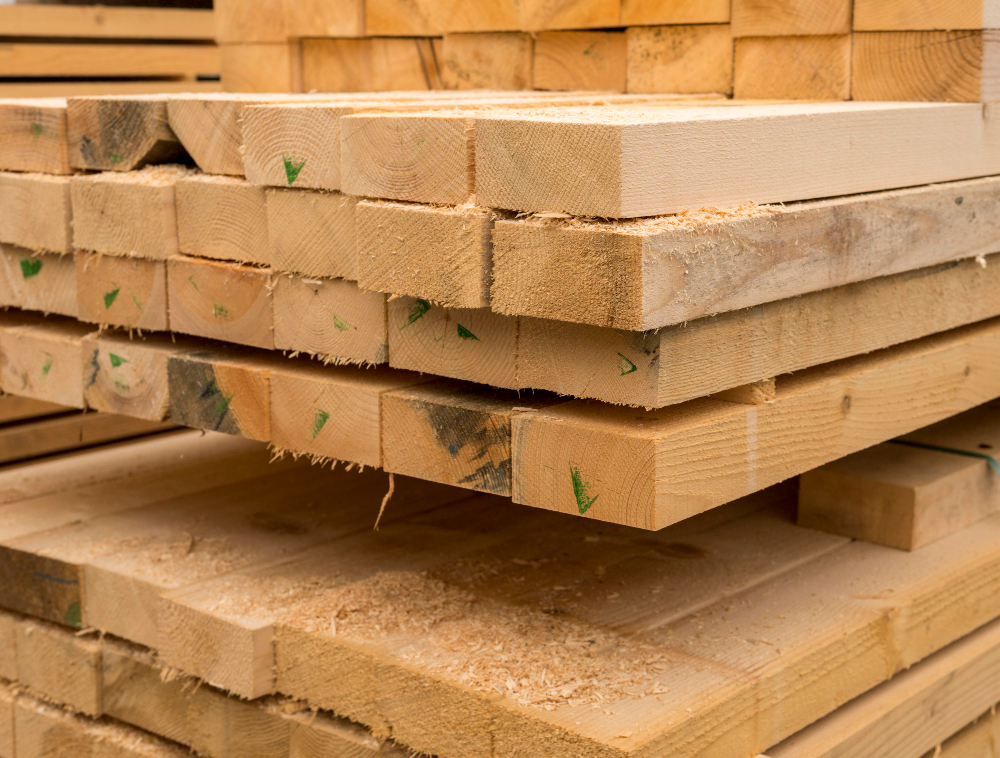In the world of construction, innovation often takes center stage, with new materials and techniques constantly emerging. However, sometimes the best solutions are the ones that have stood the test of time. Sleeper timber, also known as railroad ties, is a prime example of this. Despite its humble origins, sleeper timber offers a range of benefits that make it an excellent choice for various construction projects.
Let’s Explore the hidden benefits of using sleeper timber from Builders Merchant and why it deserves more recognition in modern construction practices.
Durability
One of the most notable benefits of sleeper timber is its exceptional durability. Originally designed to support heavy loads and withstand the elements in railroad tracks, sleeper timber is built to last. Made from sturdy hardwoods such as oak, cedar, or tropical hardwoods like jarrah, it possesses natural resistance to rot, insects, and decay. This inherent strength means that structures built using sleeper timber can stand the test of time, requiring minimal maintenance and replacement.
Furthermore, the treatment process that sleeper timber undergoes to withstand the harsh conditions of railroad tracks further enhances its durability. Pressure-treated with preservatives such as creosote or copper compounds, sleeper timber becomes highly resistant to decay and insect infestation, ensuring its longevity even in challenging environments.
Sustainability
In an era where sustainability is a top priority for many industries, sleeper timber shines as an environmentally friendly option. Unlike some modern building materials that require significant energy and resources to manufacture, sleeper timber is a renewable resource. Most sleeper timber is reclaimed from decommissioned railway lines, giving it a second life and reducing the need for new timber harvesting. Additionally, using reclaimed sleeper timber helps divert waste from landfills, making it a sustainable choice for eco-conscious builders.
Moreover, the production process of sleeper timber involves minimal energy consumption compared to alternative construction materials like concrete or steel. With proper sourcing and disposal practices, sleeper timber can contribute to the preservation of forests and the reduction of carbon emissions, making it an environmentally responsible choice for construction projects.
Cost-effectiveness
Another advantage of sleeper timber is its cost-effectiveness compared to alternative building materials. Due to its widespread availability and long lifespan, sleeper timber offers excellent value for money over the long term. While initial costs may vary depending on factors such as quality and sourcing, the durability and low maintenance requirements of sleeper timber ultimately result in significant savings for construction projects. Additionally, reclaimed sleeper timber can often be obtained at a lower cost than newly manufactured materials, making it an attractive option for budget-conscious builders.
In addition to direct cost savings, the reasonable sleeper timber prices in construction can also lead to indirect financial benefits. For example, the longevity of structures built with sleeper timber reduces the need for frequent repairs and replacements, saving both time and money over the life of the building. Furthermore, the versatility of sleeper timber allows for creative and cost-effective design solutions, enabling builders to achieve their desired aesthetic without breaking the bank.
Versatility
Despite its origins in railroad infrastructure, sleeper timber is remarkably versatile and suitable for a wide range of construction applications. From landscaping features such as retaining walls and garden beds to structural elements like beams and posts, sleeper timber can be adapted to fulfill various design requirements. Its natural appearance and rustic charm also make it a popular choice for interior and exterior design accents, adding character and warmth to any space. With proper treatment and installation, sleeper timber can seamlessly integrate into both traditional and contemporary architectural styles.
Moreover, the dimensional stability of railway sleeper timber makes it well-suited for use in challenging environments where other materials may warp or deteriorate. Whether exposed to high humidity, fluctuating temperatures, or heavy loads, sleeper timber maintains its structural integrity and aesthetic appeal, ensuring long-term performance and satisfaction for builders and homeowners alike.
Structural Integrity
In addition to its aesthetic appeal, sleeper timber for sale at Builders Merchant offers exceptional structural integrity, making it an ideal choice for load-bearing applications. The dense hardwoods used in sleeper timber construction provide superior strength and stability, ensuring that structures built with this material can withstand heavy loads and adverse weather conditions. Whether used in residential, commercial, or industrial settings, sleeper timber provides peace of mind knowing that your construction project is built to last.
Furthermore, the natural resilience of sleeper timber makes it an excellent choice for seismic-prone regions where buildings must withstand earthquakes and other natural disasters. With its ability to flex and absorb impact, sleeper timber can help mitigate damage and ensure the safety of occupants during seismic events, making it a reliable and practical building material in areas prone to geological hazards.
Conclusion
From its durability and sustainability to its cost-effectiveness and versatility, sleeper timber offers a range of advantages that make it an attractive option for builders and designers alike. By embracing the timeless appeal of sleeper timber, we can create structures that not only stand the test of time but also contribute to a more sustainable and resilient built environment.
So next time you’re planning a construction project, consider building material supplies from us.




